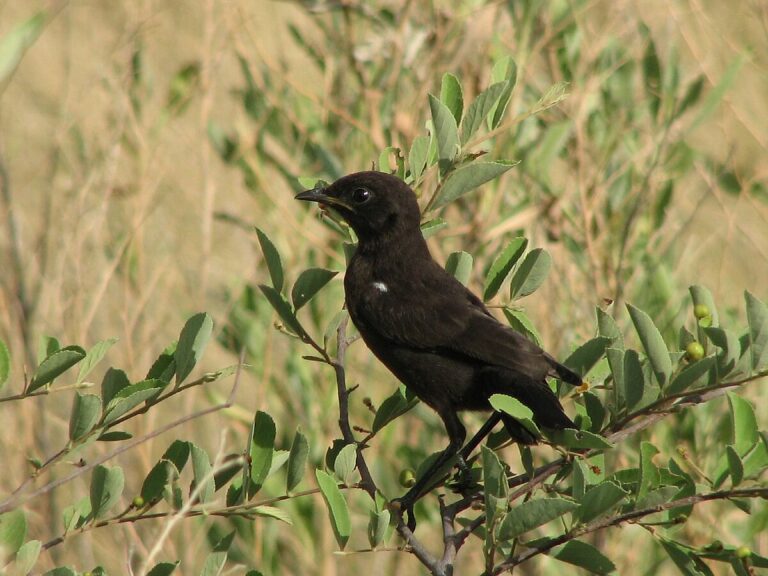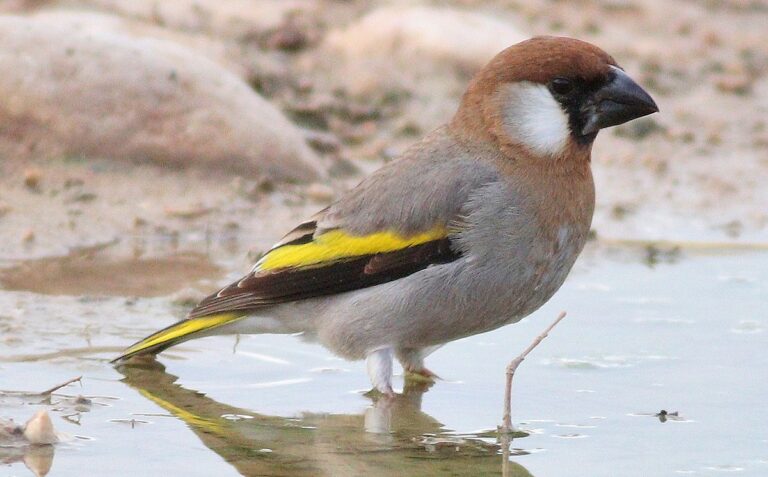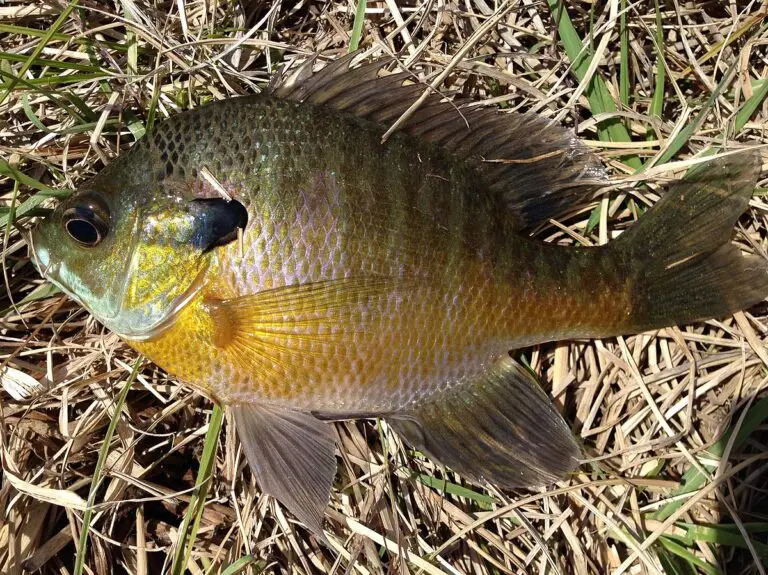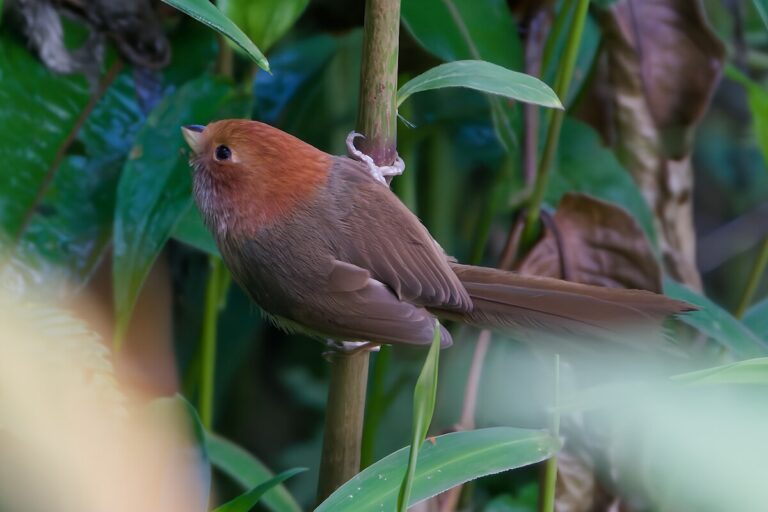Bear (Ursidae)
“There are 8 different species!”
Bear Scientific Classification
- Kingdom: Animalia
- Phylum: Chordata
- Class: Mammalia
- Order: Carnivora
- Family: Ursidae
- Genus: Ursus
- Scientific Name: Ursidae
Bear Conservation Status
- Status: Varies by species (some species are listed as Endangered)
Bear Locations
- Continents:
- Asia
- Central America
- Eurasia
- Europe
- North America
- South America
Additional Information
Bears are large mammals that belong to the family Ursidae. While the genus Ursus is common, the scientific name Ursidae encompasses the entire bear family, which includes several genera and species. Bears are found in various habitats across the world, and their conservation status varies significantly by species, with some being classified as endangered due to habitat loss, hunting, and other environmental pressures.
Bear Facts
- Main Prey: Fish, Nectar, Insects
- Distinctive Feature: Large teeth and paws and strong body
- Habitat: Forest and mountainous regions
- Predators: Human, Wolf, Wildcats
- Diet: Omnivore
- Average Litter Size: 2
- Lifestyle: Solitary
- Favorite Food: Fish
- Type: Mammal
- Slogan: There are 8 different species!
Bear Physical Characteristics
- Color: Brown, Black, White
- Skin Type: Fur
- Top Speed: 35 mph
- Lifespan: 15 – 35 years
- Weight: 50 – 1500 lbs
- Height: 1.2m – 3.3m (4ft – 11ft)
4 Amazing Facts:
- Diet Diversity: While considered a carnivorous species, most bears eat vegetation as their primary food source. In fact, just 10% of a grizzly bear’s diet is meat!
- Largest Carnivorous Land Animal: Polar bears are on average not just the largest bear species, but also the largest carnivorous land animal on Earth!
- Incredible Speed: Do NOT try to outrun a bear. Black bears can run up to 35 miles per hour, which is significantly faster than the fastest human ever. Even larger grizzly bears can reach speeds that top 30 miles per hour.
- Exceptional Sense of Smell: Many bear experts believe bears can smell from up to 20 miles away.
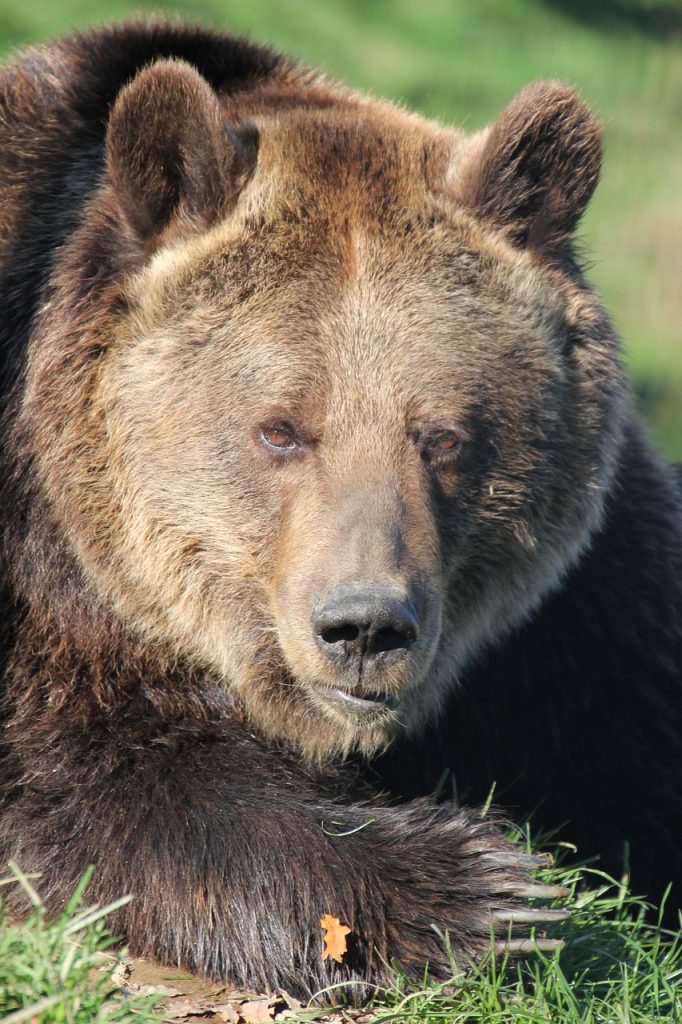
Types – The 8 Different Species
There are eight unique species of bears found in various parts of the world, each with distinct characteristics in terms of size, appearance, and dietary preferences.
- Asiatic Black Bear (Asian Black Bear)
- Habitat: Southern Asia, Afghanistan, parts of Japan
- Diet: Primarily herbivorous
- Characteristics: Also known as the moon bear due to the crescent-shaped white patch on its chest. Often found in trees in mountainous areas.
- Brown Bear
- Habitat: North America, Asia, Europe
- Diet: Omnivorous
- Characteristics: Known as the grizzly bear in North America. Distinguished by the hump over its shoulders and massive brown physique. Currently, the least likely bear species to become extinct.
- North American Black Bear
- Habitat: Northern Canada to Central Mexico
- Diet: Omnivorous, including prickly pear cactus
- Characteristics: Adaptable to various climates and habitats, including mountainous regions, meadows, and wetlands.
- Polar Bear
- Habitat: Arctic region surrounding the North Pole
- Diet: Carnivorous, primarily seals
- Characteristics: Travel on floating glacial ice blocks. Threatened by melting ice packs, making them highly susceptible to extinction.
- Spectacled Bear
- Habitat: South America, primarily in the Andes
- Diet: Omnivorous
- Characteristics: Also known as the Andean bear. Enjoys spending time in trees. Vulnerable to extinction due to human activities.
- Panda Bear
- Habitat: Central China
- Diet: Primarily bamboo
- Characteristics: Well-known for its distinctive black and white appearance. Endangered due to habitat loss and black market demand.
- Sloth Bear
- Habitat: India and Sri Lanka
- Diet: Insectivorous, including ants and termites
- Characteristics: Named for its sloth-like appearance. Features a long snout for consuming insects.
- Sun Bear
- Habitat: Malaysia and Indonesia
- Diet: Omnivorous, often eating bees’ nests
- Characteristics: Known as honey bears due to their diet. Distinctive for the cream-colored crescent markings on their chest. Vulnerable to extinction due to deforestation.
These bear species are spread across four continents: North America, South America, Europe, and Asia, each adapted to their specific environments and facing various levels of conservation challenges.
Scientific Names And Evolution
Bears belong to the family Ursidae, which includes three subfamilies: Ailuropodinae (Pandas), Tremarctinae (Spectacled bears), and Ursinae (all other bear species). Here are the scientific names of the eight bear species:
- Asiatic Black Bear (Ursus thibetanus)
- Brown Bear (Ursus arctos)
- North American Black Bear (Ursus americanus)
- Polar Bear (Ursus maritimus)
- Spectacled Bear (Tremarctos ornatus)
- Panda Bear (Ailuropoda melanoleuca)
- Sloth Bear (Ursus ursinus)
- Sun Bear (Ursus malayanus)
Subfamilies and Genus Information
- Ailuropodinae: This subfamily includes only the Panda Bear, Ailuropoda melanoleuca.
- Tremarctinae: The Spectacled Bear (Tremarctos ornatus) belongs to this subfamily. It once included extinct species such as the American giant short-faced bear and the Florida short-faced bear.
- Ursinae: This subfamily includes all other bear species:
- Ursus thibetanus (Asiatic Black Bear)
- Ursus arctos (Brown Bear)
- Ursus americanus (North American Black Bear)
- Ursus maritimus (Polar Bear)
- Ursus ursinus (Sloth Bear)
- Ursus malayanus (Sun Bear)
Evolutionary History
The evolution of bears is a relatively recent event in the history of carnivores. Bears evolved from small, dog-like mammals around 40 million years ago. It was approximately 20 million years ago that bears became identifiably unique as Ursavus elmensis, known as the dawn bear.
Significant evolutionary milestones include:
- 5.7 million years ago: The subfamily Tremarctinae (Spectacled Bear) diverged from Ursinae.
- 4-5 million years ago: DNA studies suggest that the lineages of black bears, brown bears, and polar bears began to diverge.
- 1.3 million years ago: Bears started migrating across the Bering Strait.
The genus Ursus, which means bear in Latin, encompasses several bear species within the subfamily Ursinae. This genus highlights the close evolutionary relationships among the majority of bear species.
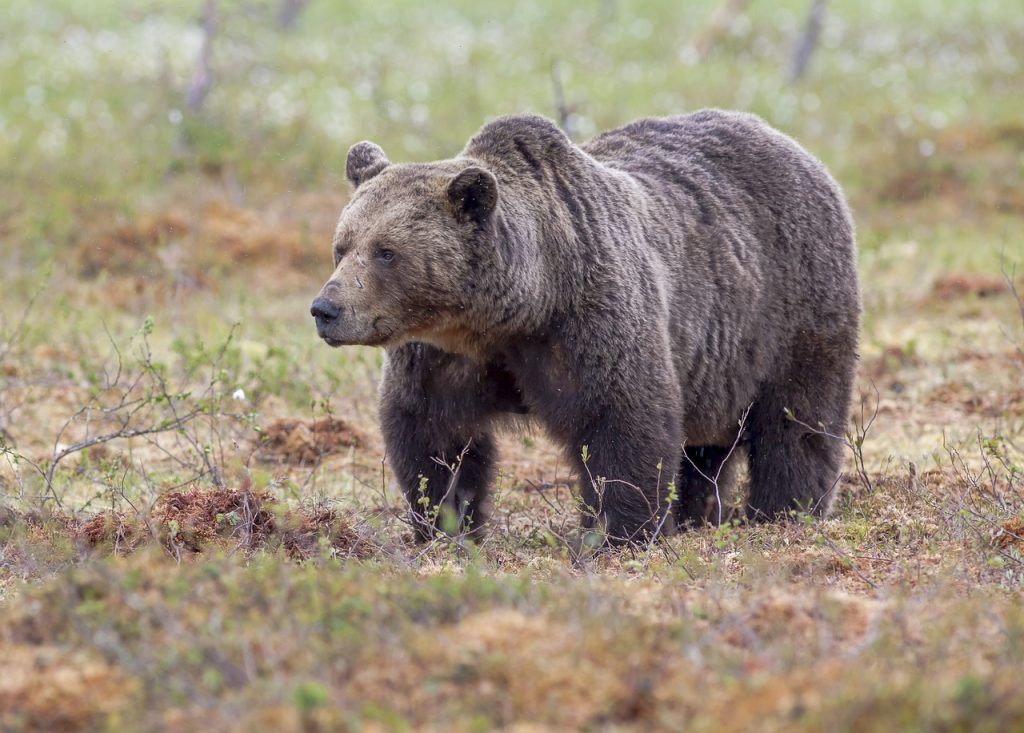
Appearance & Behavior
Bears are notable for their furry bodies and strong claws, which aid them in climbing trees and swimming. Each species has distinctive markings, such as those around the eyes and on the chest, that help differentiate them. Bears have adapted to their environments in unique ways; for example, polar bears are white to blend in with snowy surroundings, while North American black bears exhibit versatile eating habits to suit various habitats.
Sensory Abilities and Behavior
- Acute Senses: All bears possess an acute sense of smell, hearing, and sight. They often detect humans by scent and sound before seeing them, leading to their flight.
- Solitary Nature: Bears are typically solitary. However, mothers and cubs travel together, and bears may pair up during mating season.
Adaptations
- Polar Bears: Their white fur provides camouflage in snowy environments.
- North American Black Bears: They adapt their diet to available food sources, eating anything from corn crops to cactus.
Weights of Bear Species
- Asiatic Black Bear: 50 – 116 kg (110 – 255 lbs)
- Brown Bear: 93 – 410 kg (205 – 900 lbs)
- North American Black Bear: 39 – 409 kg (86 – 900 lbs)
- Polar Bear: 200 – 682 kg (440 – 1,500 lbs)
- Spectacled Bear: 64 – 125 kg (140 – 275 lbs)
- Panda Bear: 70 – 125 kg (155 – 275 lbs)
- Sloth Bear: 55 – 141 kg (120 – 310 lbs)
- Sun Bear: 22 – 50 kg (50 – 110 lbs)
Summary
Bears are fascinating creatures with a wide range of adaptations that allow them to thrive in diverse environments. Their sensory capabilities, solitary behavior, and physical adaptations such as fur color and dietary flexibility underscore their evolutionary success.
Hibernation
Many bear species hibernate to conserve energy during winter when food is scarce. Hibernation sites include caves, hollowed-out trees, self-dug holes, and previously used dens. Before hibernation, bears enter a state called hyperphagia, where they consume large amounts of food to build up fat reserves. For example, Himalayan black bears can weigh up to 400 pounds before hibernation, compared to their usual 200-265 pounds.
Hibernation Practices Among Bear Species
- Species That Hibernate:
- Asiatic Black Bear (Ursus thibetanus): Typically hibernates in mountainous and northern regions.
- Brown Bear (Ursus arctos): Known for hibernating in dens during winter.
- North American Black Bear (Ursus americanus): Hibernates in various locations, including hollow trees and ground holes.
- Sloth Bear (Ursus ursinus): In some regions, may enter a state of torpor but not true hibernation.
- Spectacled Bear (Tremarctos ornatus): May enter a light hibernation depending on food availability.
- Sun Bear (Ursus malayanus): Rarely hibernates due to the tropical climate but can exhibit torpor.
- Species That Do Not Typically Hibernate:
- Panda Bear (Ailuropoda melanoleuca): Adjusts its altitude to find food rather than hibernating.
- Asiatic Black Bear (Ursus thibetanus) in southern climates: May not hibernate due to milder winters.
- Polar Bear (Ursus maritimus): Does not hibernate, but pregnant females enter maternity dens where they stay dormant for extended periods.
Hibernation is a crucial survival strategy for many bear species, enabling them to withstand periods when food is scarce. However, not all bears hibernate; some adapt to seasonal changes in food availability by altering their location or behavior.
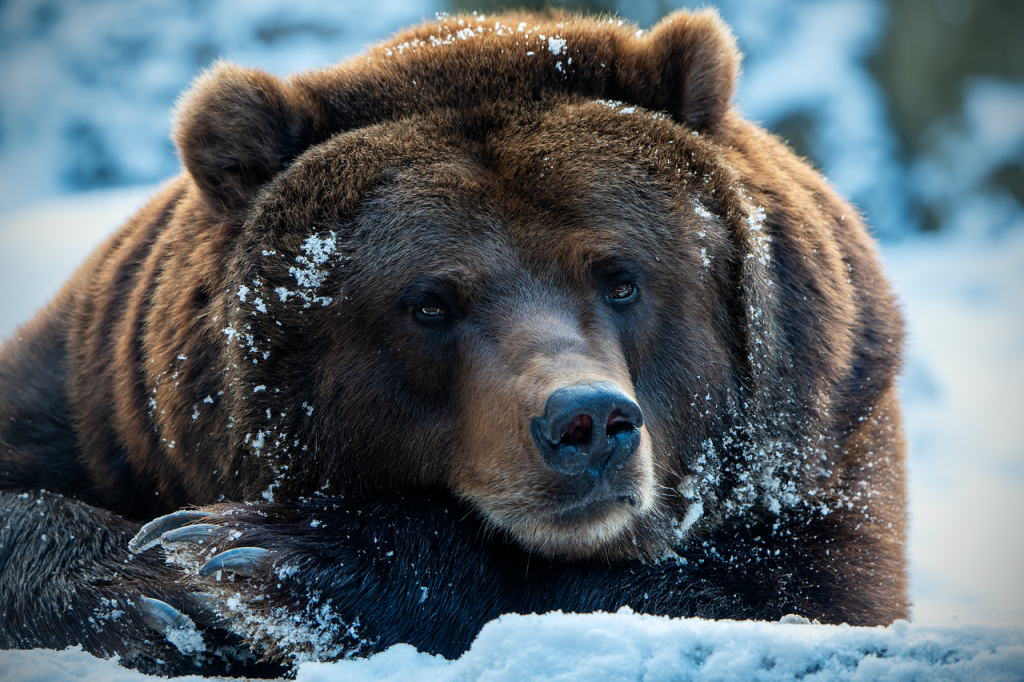
Habitats
Bears inhabit a wide range of geographic regions and environments, reflecting their diverse adaptations and appearances. These regions span North America, Europe, Asia, and South America, but bears are absent from Antarctica and Australia.
Preferred Habitats
- Forests: Most bear species prefer dense forest canopies. Forests provide cover, food sources, and denning sites.
- High Elevations: Some species, like the Asiatic Black Bear (Ursus thibetanus), favor mountainous regions.
- Coastal Regions: Polar Bears (Ursus maritimus) are adapted to Arctic coastal environments, relying on sea ice to hunt seals.
- Desert Climates:
- Spectacled Bears (Tremarctos ornatus): Found in various habitats including Andean deserts.
- American Black Bears (Ursus americanus): Can inhabit diverse environments, including deserts where they adapt their diet accordingly.
Geographic Range of Each Species
- Asiatic Black Bear (Ursus thibetanus)
- Range: Southern Asia, Afghanistan, parts of Japan
- Habitat: Mountainous forests, often found in trees
- Brown Bear (Ursus arctos)
- Range: North America, Europe, Asia
- Habitat: Forests, mountains, tundra, and coastal regions
- North American Black Bear (Ursus americanus)
- Range: Northern Canada to Central Mexico
- Habitat: Forests, meadows, wetlands, sometimes deserts
- Polar Bear (Ursus maritimus)
- Range: Arctic regions surrounding the North Pole
- Habitat: Sea ice, coastal regions
- Spectacled Bear (Tremarctos ornatus)
- Range: Andes Mountains in South America
- Habitat: Cloud forests, high-altitude grasslands, and desert regions
- Panda Bear (Ailuropoda melanoleuca)
- Range: Central China
- Habitat: Bamboo forests in mountainous regions
- Sloth Bear (Ursus ursinus)
- Range: India, Sri Lanka
- Habitat: Tropical forests, grasslands
- Sun Bear (Ursus malayanus)
- Range: Southeast Asia, including Malaysia and Indonesia
- Habitat: Tropical rainforests
Adaptation and Vulnerability
Bears’ ability to adapt to new habitats is crucial for their survival, especially as their natural environments face destruction due to human activities like development and logging. Populations that fail to adapt are at greater risk of extinction. For instance, habitat destruction poses a significant threat to species like the Panda Bear (Ailuropoda melanoleuca) and the Spectacled Bear (Tremarctos ornatus).
Bear species exhibit remarkable adaptability across diverse habitats, from dense forests and high mountains to coastal and desert regions. Their widespread geographic distribution highlights their ecological versatility, yet also underscores the importance of conserving their habitats to ensure their continued survival.
Diet and Food
Bears have demonstrated remarkable dietary flexibility, enabling them to survive on a wide variety of foods. Here is an overview of the dietary habits of different bear species:
- Panda Bear (Ailuropoda melanoleuca)
- Diet: Primarily bamboo, which makes up about 99% of their diet.
- North American Black Bear (Ursus americanus)
- Diet: Omnivorous, consuming vegetation, fruits, nuts, insects, small mammals, fish, and occasionally larger animals like deer. They also eat human food and garbage if available.
- Brown Bear (Ursus arctos)
- Diet: Omnivorous, eating plants, berries, insects, small mammals, fish (especially salmon), and larger mammals like elk and caribou.
- Polar Bear (Ursus maritimus)
- Diet: Carnivorous, primarily eating seals. They also hunt whales and smaller walruses and occasionally scavenge.
- Sloth Bear (Ursus ursinus)
- Diet: Insectivorous, mainly ants and termites, supplemented with fruits and honey.
- Spectacled Bear (Tremarctos ornatus)
- Diet: Omnivorous, consuming fruits, bromeliads, small mammals, and occasionally livestock.
- Asiatic Black Bear (Ursus thibetanus)
- Diet: Omnivorous, including fruits, nuts, insects, small mammals, and carrion.
- Sun Bear (Ursus malayanus)
- Diet: Omnivorous, eating insects, honey, fruits, small vertebrates, and occasionally birds.
Human Interaction and Risks
Bears’ attraction to human food poses significant risks:
- Property Damage: Bears seeking human food can cause extensive property damage.
- Safety Threats: Bears accustomed to human food can become aggressive and pose threats to human safety.
- Management: Such bears are often euthanized due to the dangers they pose, a tragic and avoidable outcome if humans refrain from feeding them.
Survival and Risks
While bears can eat a wide range of foods, including vegetation, insects, and larger animals, they face certain risks:
- Human Food: Leads to problematic behaviors and often results in bears being put down.
- Poisonous Plants: Occasionally, bears may ingest poisonous plants by mistake, which can be fatal.
Bears are highly adaptable omnivores capable of surviving on diverse diets, from bamboo and insects to large mammals and fish. However, human interactions and access to human food pose significant risks to both bears and people. Preventing bears from accessing human food is crucial to reducing conflicts and protecting bear populations.
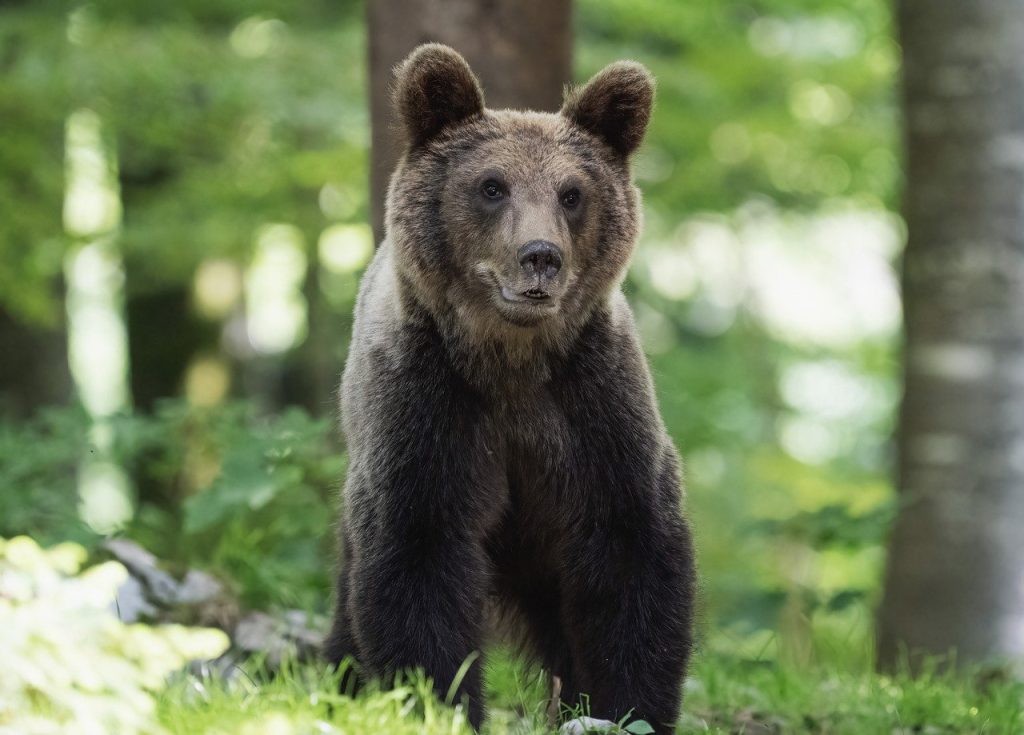
Population
Bear species vary significantly in their conservation status, with some more vulnerable to extinction than others. Here is an overview of the current population estimates and conservation status of each bear species:
- Asiatic Black Bear (Ursus thibetanus)
- Population: Less than 50,000
- Status: Vulnerable due to habitat loss, poaching, and human-wildlife conflict.
- Brown Bear (Ursus arctos)
- Population: Approximately 200,000
- Status: Stable, though some regional populations are at risk due to habitat fragmentation and human activities.
- North American Black Bear (Ursus americanus)
- Population: Around 600,000
- Status: Least concern, with populations increasing due to effective management and conservation efforts.
- Polar Bear (Ursus maritimus)
- Population: 20,000 to 25,000
- Status: Vulnerable, primarily due to climate change and melting sea ice which affects their hunting grounds.
- Spectacled Bear (Tremarctos ornatus)
- Population: Less than 2,000
- Status: Vulnerable, with major threats including habitat loss and hunting.
- Panda Bear (Ailuropoda melanoleuca)
- Population: Approximately 2,000
- Status: Vulnerable, though conservation efforts in China have stabilized their numbers.
- Sloth Bear (Ursus ursinus)
- Population: 7,000 to 10,000
- Status: Vulnerable, facing threats from habitat destruction and poaching for body parts.
- Sun Bear (Ursus malayanus)
- Population: Unknown, possibly less than 1,000
- Status: Vulnerable due to deforestation and hunting.
Summary of Conservation Status
- Vulnerable Species: Asiatic black bears, polar bears, panda bears, sloth bears, and sun bears are all at risk of extinction due to factors like habitat loss, climate change, poaching, and human-wildlife conflict.
- Stable Species: Brown bears have a stable population overall, though some local populations are threatened.
- Least Concern: North American black bears are currently of least concern with increasing population numbers.
Conservation Efforts Needed
- Habitat Protection: Essential for all vulnerable bear species to prevent further loss and fragmentation.
- Anti-Poaching Measures: Critical for species like the Asiatic black bear, sloth bear, and sun bear.
- Climate Change Mitigation: Vital for the survival of polar bears as their habitat continues to diminish.
- Human-Wildlife Conflict Reduction: Implementing strategies to minimize encounters and conflicts between humans and bears to ensure their safety and conservation.
Efforts to protect bear habitats and mitigate human impact are crucial for preventing the extinction of these magnificent creatures.
Extinction
Recent Extinctions
- Californian Grizzly Bear
- Extinction: 1920s
- Cause: Hunting
- Description: A subspecies of the brown bear once native to California.
- Mexican Grizzly Bear
- Extinction: 1960s
- Cause: Hunting
- Description: Another subspecies of the brown bear that lived in Mexico.
- Atlas Bear
- Extinction: 1870s
- Cause: Hunting
- Description: The only bear native to Africa, primarily found in the Atlas Mountains.
Notable Near-Extinctions and Conservation Efforts
- Giant Panda Bear (Ailuropoda melanoleuca)
- Status: Near extinction in recent times; significant conservation efforts have been implemented.
- Threats: Habitat loss, low birth rates, poaching.
- Conservation: Efforts in China have included creating reserves, breeding programs, and strict anti-poaching laws.
- Polar Bear (Ursus maritimus)
- Status: Under severe threat due to climate change.
- Threats: Melting sea ice, loss of hunting grounds.
- Conservation: Strategies focus on mitigating climate change impacts and protecting critical habitats.
Extinct Prehistoric Bears
- Giant Short-Faced Bear (Arctodus simus)
- Extinction: Around the end of the Ice Age (~11,000 years ago).
- Description: A massive carnivorous bear that stood 12 feet tall, ran at speeds over 40 mph, and weighed over 1,500 pounds.
- Cause of Extinction: Habitat loss and possibly competition with humans and other predators.
- Cave Bear (Ursus spelaeus)
- Extinction: Around 25,000 years ago, before the last Ice Age began.
- Description: Inhabited much of Europe and was similar in weight to the short-faced bear, up to 1,500 pounds.
- Cause of Extinction: Climate changes and possibly human competition.
Several bear species and subspecies have faced extinction due to human activities, such as hunting and habitat destruction. Recent conservation efforts have successfully prevented the extinction of species like the giant panda, while others, like the polar bear, remain under severe threat from climate change. Prehistoric bears like the giant short-faced bear and the cave bear became extinct due to natural climatic shifts and possibly competition with humans and other animals. Protecting current bear species requires ongoing efforts to mitigate human impact and adapt to changing environmental conditions.
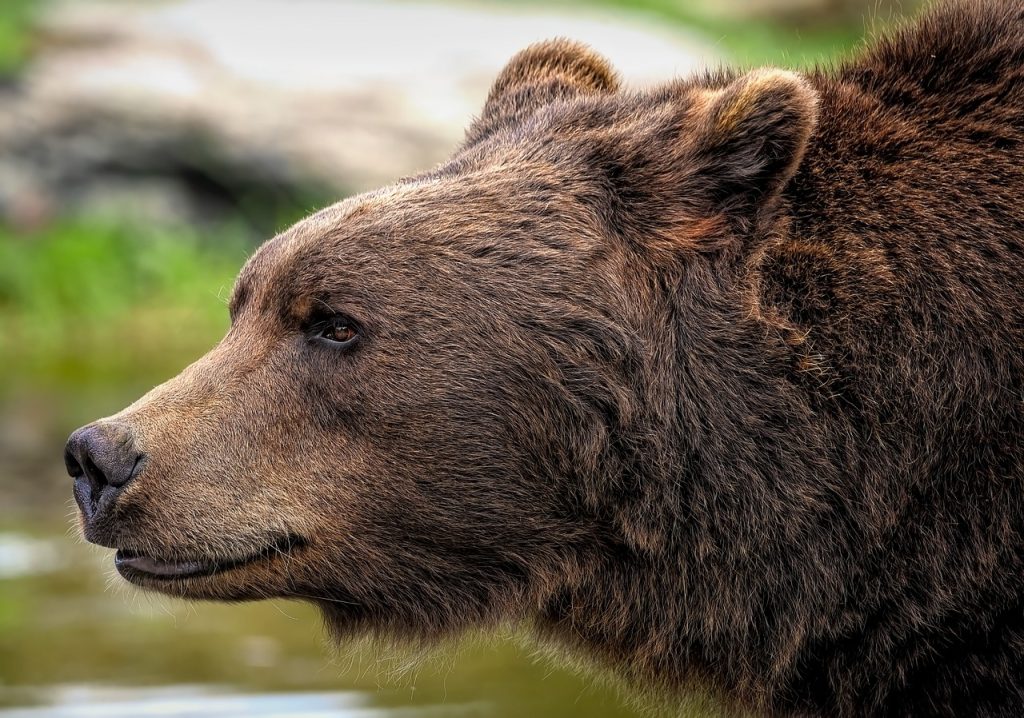
Predators and Threats
Bear cubs and adult bears face different levels and types of threats from predators and human activities. Understanding these threats is essential for developing effective conservation strategies.
Predators and Threats to Bear Cubs
- Natural Predators: Bear cubs are vulnerable to various predators, including:
- Coyotes
- Wolves
- Eagles (particularly for smaller bear species)
Predators and Threats to Adult Bears
- Natural Predators: Adult bears have very few natural predators. The main threats they face include:
- Other Bears: Bears can be territorial and may attack each other, especially during mating season or over food resources.
- Humans: The most significant threat to adult bears, involving:
- Illegal Hunting and Poaching: Bears are hunted for their meat, fur, and body parts, which are sold on the black market for traditional medicine and other uses.
- Legal Hunting: In some regions, bears are legally hunted, which can impact local populations if not properly managed.
Environmental and Human-Induced Threats
- Habitat Destruction: Deforestation and development are major threats to bear habitats. As forests are cleared for agriculture, urban development, and logging, bears lose their homes and food sources.
- Climate Change: Changes in climate affect bears’ natural habitats and food availability, particularly for species like the polar bear that rely on sea ice for hunting.
- Human Encroachment: As humans encroach into bear habitats, encounters between bears and humans increase, often leading to bears being killed as nuisances or threats.
- Food Scarcity: Environmental changes and habitat destruction can lead to a decrease in natural food sources, forcing bears to venture closer to human settlements in search of food.
Conservation Efforts and Strategies
To mitigate these threats, a combination of legal protection, habitat conservation, and public education is necessary:
- Anti-Poaching Laws and Enforcement: Strengthening and enforcing laws against illegal hunting and trade of bear parts.
- Habitat Protection: Establishing and maintaining protected areas where bears can live and forage without human interference.
- Climate Action: Addressing climate change through global initiatives to reduce greenhouse gas emissions, protecting habitats critical for species like the polar bear.
- Human-Bear Conflict Mitigation: Implementing strategies to reduce conflicts, such as securing garbage, educating the public on not feeding bears, and creating bear-safe zones in areas of human habitation.
- Research and Monitoring: Conducting ongoing research to monitor bear populations, health, and habitat use, which can inform conservation strategies and actions.
Bear cubs face threats from natural predators, while adult bears’ primary predators are other bears and humans. The greatest threats to bear populations come from human activities, including illegal hunting, habitat destruction, and climate change. Effective conservation efforts require a multifaceted approach involving legal protections, habitat conservation, and strategies to reduce human-bear conflicts.
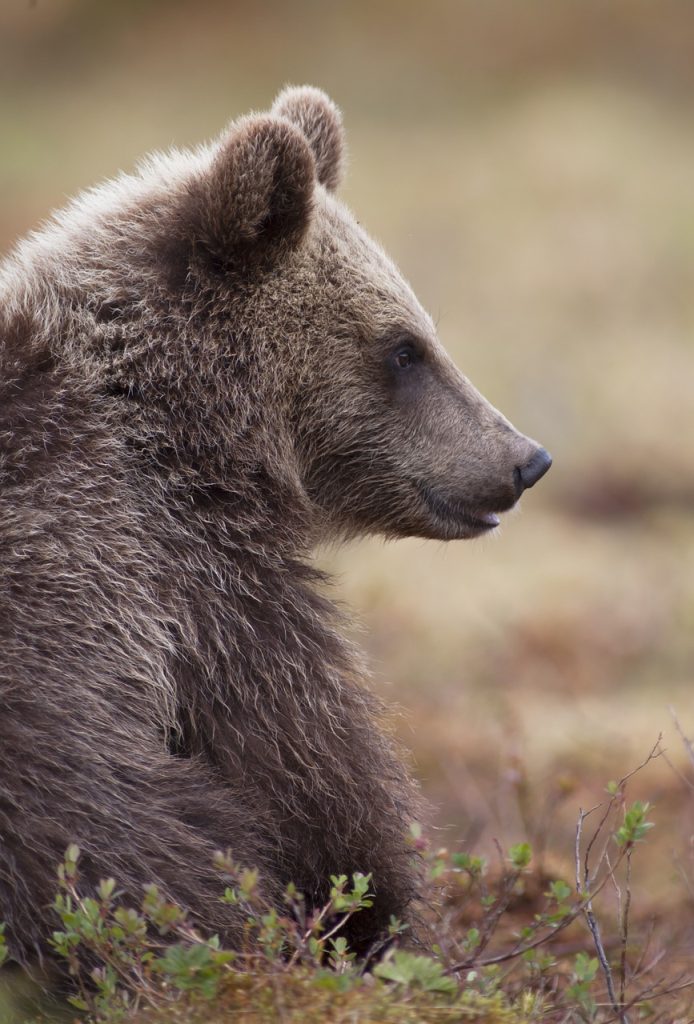
Mating, Babies, and Lifespan
Courting and Mating
- Breeding Season: The courting and mating process for bears occurs from May to early July.
- Behavior: During this time, male bears (who are promiscuous) will mate with multiple females if possible. Due to intense competition, usually only the largest and most dominant males succeed in mating.
- Female Strategy: Females also mate with multiple partners over their lifetimes, enhancing genetic diversity.
- Mating Process: During courting, a male and female bear become nearly inseparable.
- Gestation and Birth: Females typically give birth in January and February to 1-6 cubs, although 1-3 is more common.
Maternal Care
- Affectionate and Protective: Mother bears are notably affectionate and protective of their cubs.
- Duration of Care: Cubs stay with their mothers for up to three years, during which they are fed milk and food gathered by the mother and themselves.
- Separation: Upon separation, cubs often struggle to adapt and may stay together as siblings for a period.
Lifespan of Bear Species
Bears generally live longer in captivity than in the wild. The following are the average and oldest recorded lifespans of various bear species:
- Asiatic Black Bear (Ursus thibetanus)
- Wild: 25 to 30 years
- Oldest on Record: 42 years
- Brown Bear (Ursus arctos)
- Wild: 20 to 30 years
- Oldest on Record: 40 years
- North American Black Bear (Ursus americanus)
- Wild: 20 years
- Oldest on Record: 39 years
- Polar Bear (Ursus maritimus)
- Wild: 20 to 30 years
- Oldest on Record: 45 years
- Spectacled Bear (Tremarctos ornatus)
- Wild: 20 years
- Oldest on Record: 37 years
- Panda Bear (Ailuropoda melanoleuca)
- Wild: 15 to 20 years
- Oldest on Record: 38 years
- Sloth Bear (Ursus ursinus)
- Wild: 20 years
- Oldest on Record: 27 years
- Sun Bear (Helarctos malayanus)
- Wild: 25 years
- Oldest on Record: 34 years
Health and Aging
- Health Decline: As bears age, they experience declines in dental health, eyesight, and overall sensory acuity.
- Impact on Survival: These health issues can significantly affect their quality of life and ability to survive in the wild.
Bears have a complex and competitive mating process, with males mating with multiple females and females ensuring the survival of their cubs with dedicated care. Lifespans vary by species, with bears living longer in captivity due to controlled environments and medical care. Aging bears face health challenges similar to humans, which can impact their ability to thrive in the wild. Conservation efforts are essential to ensure the survival of these magnificent creatures amidst the various threats they face.
Conclusion
Bears represent a diverse and iconic group of animals that play a vital role in ecosystems worldwide. Threatened by habitat loss, poaching, and climate change, their conservation is paramount. By addressing these challenges through habitat protection, anti-poaching measures, and climate action, we can ensure a future where bears continue to roam our planet, enriching our natural world for generations to come.
